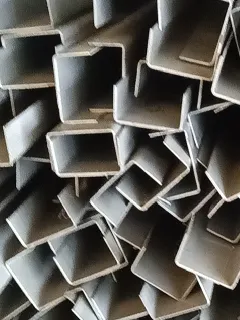loading...
- No. 9, Xingyuan South Street, Dongwaihuan Road, Zaoqiang County, Hengshui, Hebei, China
- admin@zjcomposites.com
- +86 15097380338
- Welcome to visit our website!
Structural Analysis and Design of Reinforced Concrete Using Fiber Reinforced Polymer Bars
Reinforced concrete has long been a cornerstone in civil engineering, valued for its remarkable compressive strength, versatility, and durability. Traditional steel reinforcement bars (rebar) have been the standard for enhancing concrete's tensile properties. However, Fiber Reinforced Polymer (FRP) bars have emerged as a viable alternative, promising superior performance in specific environments and applications. The mechanics and design of reinforced concrete with FRP bars is a burgeoning field that offers exciting possibilities for modern construction.
Understanding the mechanics of reinforced concrete necessitates recognizing the limitations of concrete alone. While concrete exhibits excellent compressive strength, its tensile strength is relatively weak. Steel rebar addresses this issue, as it bonds well with concrete and expands and contracts at similar rates under temperature variations. However, steel has its own set of problems, including susceptibility to corrosion, which can compromise structural integrity over time.
FRP bars, made from materials such as carbon, glass, or aramid fibers, boast several advantages over traditional steel rebar. One of the primary benefits is their resistance to corrosion, making them ideal for use in harsh environments such as marine settings and areas with high salinity or chemical exposure. FRP bars are also lightweight, reducing transportation and labor costs, and they exhibit high tensile strength, which effectively complements the compressive strengths of concrete.
The mechanics of FRP-reinforced concrete involve a few critical differences from traditional reinforced concrete. FRP materials are anisotropic, meaning their mechanical properties vary depending on the direction of the force applied. Consequently, designing with FRP requires careful consideration of the orientation of the fibers. Additionally, the bond between FRP bars and concrete differs from that of steel rebar. Adhesive properties, stress transfer, and the potential for slip all differ and must be meticulously analyzed during the design phase.
reinforced concrete with frp bars mechanics and design

The design principles for reinforced concrete with FRP bars also need to account for these differences. Codes and standards have been evolving to provide guidance for engineers. For instance, the American Concrete Institute (ACI) has published specific guidelines, such as ACI 440.1R-15, which offer extensive recommendations on designing reinforced concrete structures with FRP bars. These guidelines cover aspects such as allowable stress rates, deflection limits, and service life predictions.
Design strategies also involve addressing the mechanical and thermal properties of FRP. For instance, the coefficient of thermal expansion for FRP is different from that of concrete, necessitating additional considerations to avoid stress concentrations due to temperature changes. Structural elements like beams, slabs, and columns often require tailored approaches to combine the benefits of FRP with concrete's inherent properties.
Case studies have demonstrated the successful application of FRP-reinforced concrete in various projects worldwide. For example, bridges and parking structures in coastal areas have benefited significantly from FRP reinforcement due to their enhanced durability and reduced maintenance costs. Similarly, research continues to explore innovative uses for FRP bars in seismic retrofitting and other specialized applications.
In conclusion, while the field of reinforced concrete with FRP bars is still evolving, its potential is undeniable. Addressing the unique mechanics of FRP materials and incorporating design principles that leverage their benefits can lead to structures that outperform traditional steel-reinforced concrete in durability, strength, and cost-efficiency. As construction challenges grow increasingly complex, the development and implementation of FRP-reinforced concrete stand to play a pivotal role in the future of civil engineering.
-
Premium FRP Handrail for All ApplicationsNewsAug.29,2025
-
Low Maintenance FRP Mini Mesh Grating ProductsNewsAug.29,2025
-
Innovative FRP Square Tubes for Modern Industrial SolutionsNewsAug.29,2025
-
FRP Water Storage Tanks Wholesale Solutions for Bulk BuyersNewsAug.29,2025
-
FRP Molded Grating Solutions for Diverse Industrial ApplicationsNewsAug.29,2025
-
Construction Advancements Through FRP Pultruded ProfilesNewsAug.29,2025
-
Why Choose FRP Railings, Guardrails, and Handrail Systems?NewsAug.29,2025
